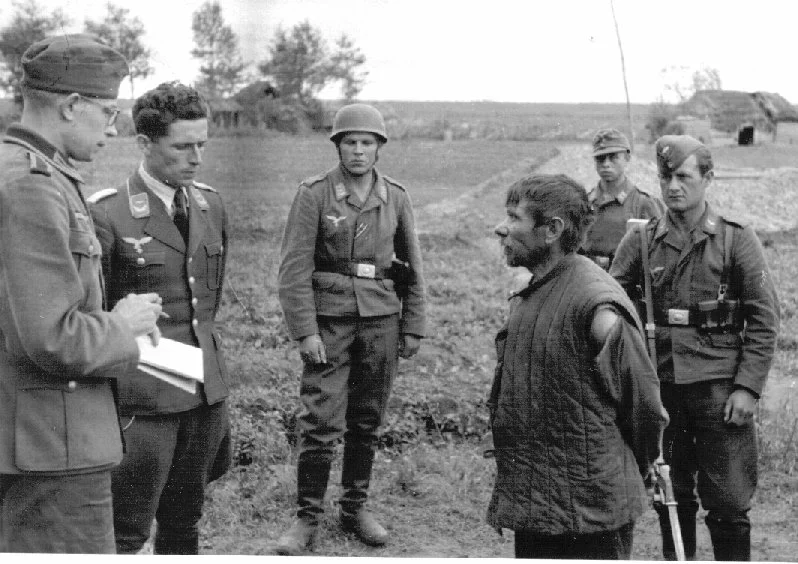Behind the Pages
The research necessary to write a compelling work of historical fiction can seem daunting; the facts of worlds far away, both in time and distance, different languages, mores and cultures… I feel privileged to spend so much of my time learning about the places and times I want to write about and thought I’d share some of the facts behind the fiction. For me, a world divorced of history appears flat, it’s horizons narrow. This is my very modest attempt to make the world rounder, fuller and maybe, more interesting.
Jews, Mountains and Germans
Much of my novel, You With your Waiting, takes place in the Caucasus, the area between the Black and Caspian Seas stretching 1200 kilometers east to west and 500 kilometers north to south. During the German occupation of the region during WWII, the Nazis murdered as many as 70,000 Jews in the spa towns and villages sprinkled throughout the mountainous territory. This number represents more than half of all Jews murdered in the Russian SSR in 1942-43. And yet there were stunning stories of rescue and survival. One story, fictionalized in You, With Your Waiting, recounts the daring attempt to rescue 32 children by the Circassian community in Beslenei. I do not name Beslenei in the novel but I do name the mayor of the town, the man who insisted on an ingenious plan to save Jewish orphans through adoption— Murzabek Okhtov.
In April of 1942, a convoy of orphaned children escaped besieged Leningrad, travelling across frozen Lake Lagoda, then slowly making its way south toward the Caucuses. After their train was bombed by German planes, the convoy of children separated into smaller groups and walked to Armavir, a settlement in Krasnodar Krai, where they were given horse carts with which to continue their journey. Forced to beg for food as they travelled, a small group of these children reached Beslenei and asked for shelter on August 13, 1942.
The chairman of the kolkhoz, Khusin Lakhov, called a meeting of the village elders who promptly decided the children were too frail to continue towards Teberda, their desired destination in the mountains further south. Two of the elders argued against harboring the children for fear of German reprisals against their families. Murzabek Okhtov argued that to reject the children would violate adige khabze, the Circassian moral code that values adopting orphans and extending hospitality to strangers. The council of elders voted to adopt all the children, 31 boys and one girl. The community understood full well that to harbor Jewish children was dangerous and so to mitigate the risk to the community and the children, they forged the household record book to make it appear as if the adopted children were born in Beslenei. All the children were assigned Circassian names.
The Germans marched into Beslenei soon after the children arrived. Murzabek Okhtov, posing as a collaborator, was appointed mayor. The Germans were suspicious; they’d heard rumors that Jewish children had asked for shelter, but they were only able to identify one boy. He had been adopted by a childless woman who, by all accounts tried to hide him but was betrayed by a local collaborator. The Germans killed the boy. His adopted mother was found dead a few days later on the grave of the child she had tried to save.
The story of Beslenei highlights the courageous and principled actions of an entire community. To be sure, such acts were extremely rare. All the more reason the Circassian villagers stand out for their humanity and courage, for their willingness to risk everything for vulnerable children. As a researcher and writer, Beslenei was one of the fascinating tales of the Caucuses during the Great War, and one that bolsters my fragile faith in an etiology of goodness.
Source: Youmans, William L., and Sufian, N. Zhemukhov “Rescue and Jewish-Muslim Relations in the North Caucasus.” In Beyond the Pale: The Holocaust in the North Caucasus, edited by Crispin Brooks and Kiril Feferman, University of Rochester Press/Boydell & Brewer Limited, 2020, pp. 270-318
